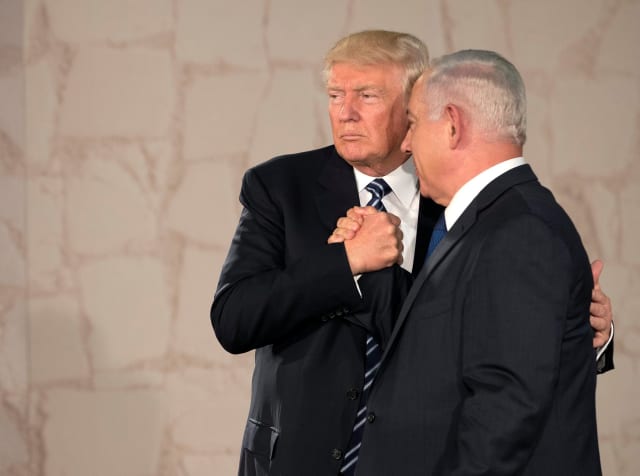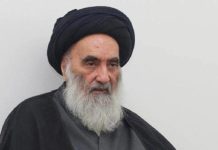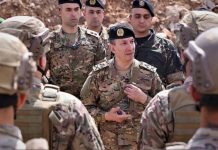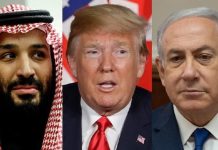Lebanon, Yemen, and Iran After Gaza
Abdulrahman Al-Rashed/Asharq Al-Awsat/October 15, 2025
لبنان واليمن وإيران بعد غزة
عبد الرحمن الراشد/الشرق الأوسط/15 تشرين الأول/2025
انتهت حربُ غزةَ ولم تنتهِ كلُّ الحرب، هناك ثلاثُ جبهاتٍ مفتوحة. في لبنانَ هدنةٌ مؤقتة، وتراشقٌ متقطّعٌ مع حوثي اليمن. ولا تزال إيرانُ هي الجبهةَ الكبرى، وفي حالةِ استنفار منذ يونيو (حزيران) الماضي بعد حربِ الاثني عشرَ يوماً.
العيونُ على نتنياهو، فهل ستجرفه التطوراتُ الأخيرة بعد مؤتمر شرم الشيخ ويخرجُ من رئاسة الحكومة؟ المرجَّح أنَّه يسعى لإكمالِ المهام التي تعهَّد بتنفيذها، وتعود الاشتباكات إلى الجبهات الثلاث، لأنَّ هجمات أكتوبر (تشرين الأول) 2023 وقعت في عهده ويتحمَّل مسؤوليتَها، ويشعر أنَّ تحقيقَ انتصارات كاملة سيضعه فوقَ المساءلة. إنَّما إنْ تمكن منافسوه من إسقاطه، حينَها سيكون الوضعُ في المنطقة معلقاً في انتظار البديل وسياسةٍ جديدة لإسرائيل. ولكن ربَّما يختار التهدئةَ وينهي عامين من الاضطرابات.
احتمال بقاءِ نتنياهو هو الأرجحُ، بمَا عُرف عنه من مهاراتٍ حزبية في نظامٍ برلماني معقَّد يستطيع فيه ترتيبَ ائتلافات تمدّد حكمه. فهوَ حكم الدولةَ اليهودية لأكثرَ من 17 عاماً، وهي مدةٌ فاقَ بها بن غوريون، ولا تزال له شعبيةٌ كافيةٌ بعد الحروب التي شنَّها، وحقَّقت لإسرائيلَ أكبرَ انتصاراتِها منذ حرب 1967.
يدور القلقُ في لبنانَ وقد عبَّر عن هذا الرئيس جوزيف عون، من أن تلتفتَ إسرائيلُ إلى بلاده بعد أن تنتهيَ من غزة، لما وصفه بـ«الاسترزاق السياسي». بالتأكيد سيكون لدى إسرائيلَ فائضُ قوة بعد سحبِ معظم جيشِها من القطاع. ولأنَّ «حزب الله» يناور للتهرُّبِ من تنفيذِ ما وقَّعَ عليه مع إسرائيلَ بتسليم سلاحِه للجيش اللبناني، الذي على أساسه تمَّ وقفُ إطلاق النار، فإنَّ الجبهةَ الشمالية الإسرائيلية تعتبر مفتوحة. ولن يستطيعَ الرئيسُ الأميركي ردعَ نتنياهو هذه المرة، لأنَّ الجانبين الأميركي والفرنسي كانا شاهدين على الاتفاق وضامنين له. الكرةُ الآن في ملعب الرئيس اللبناني الذي يتحاشى الاشتباكَ مع «حزب الله» رغبة في المحافظة على السّلم الأهلي والاستقرار الذي تحقَّق منذ مطلع العام.
ووفقاً لإسرائيلَ، فهي لن تنسحبَ من جنوب لبنان، ولن توقفَ هجماتِها إلا بعد أن يسلّمَ الحزبُ سلاحَه أو ربَّما تُستحدث ترتيباتٌ جديدةٌ تقدّم الضمانات المطلوبة.
الاشتباكُ مع الحوثي في اليمن ينتظر سلوكَ الجماعة الموالية لإيرانَ، وماذا ستفعل بعد أن قبلت «حماس» إنهاءَ الحرب. لدى إسرائيلُ الإمكانية العسكريةَ على إضعاف الحوثي وتهيئة القوى اليمنيةِ على الأرض لإكمال المهمةِ وإسقاط حكم أنصار اللهِ في صنعاءَ، ويمكن رصدُ الحماس الذي أعاد الحياةَ لهذه القوى والاستعداد للمرحلة المقبلة.
الأصعبُ والأخطر وذاتُ التَّداعيات الإقليمية الواسعة هي جبهة إيران. الرئيسُ ترمب هو من أوقفَ القتالَ الذي لم يكمل أسبوعين. ترمب دخل الحربَ وأمر بشنّ الهجوم على منشآت إيرانَ النووية، وكانت حربه الأولى ثم أعلن عن وقف إطلاق النار. لم يكن نتنياهو راضياً حينَها وفشل في الحصول على الضوءِ الأخضر ليكملَ العمليات العسكرية المرسومة. وقد استخدمَ الرئيس الأميركي ببراعةٍ هذا الموقفَ ضد طهرانَ مهدداً إياها بأنَّه سيطلق عقالَ نتنياهو عليها إنْ عادت للتَّخصيب أو النَّشاط العسكري.
هذا ما يجعلُ القواتِ الإيرانيةَ المسلحة في حالة استنفار اليوم، ونتنياهو لن تنقصَه الحيلةُ ولا الذريعة لاستئنافِ حربه لو أراد. إنْ وقع الاشتباكُ بين القوتين الإقليميتين الكبريين إيرانَ وإسرائيل سيكون مدمّراً. ودول المنطقةُ في محيط الحرب تترقَّب بقلقٍ واستنفار ما يحدث.
السياسيون في لبنانَ وإيرانَ لا بدَّ أنَّهم يدركون أنَّ المخاطرَ لم تنتهِ ولن تنتهيَ باتفاق وقفِ إطلاق النار في غزة. تلك الحربُ الدموية انتهت باتفاقٍ ثنائي، وبقيتِ الأوضاعُ على الجبهات الأخرى مفتوحة.
الحضورُ الدوليُّ الكبير الذي يدعم التفاوضَ ويمارس الضغوطَ ومنح الدعم في غزة، يعطي الأطرافَ الثلاثة الأخرى المهدَّدةَ فرصةً للبحث في ترتيب أوضاعها واتفاقاتها وعدم الاكتفاء بالهدن، فالهدنة ليست سوى قنبلةٍ موقوتة.
Lebanon, Yemen and Iran after Gaza
Abdulrahman Al-Rashed/Asharq Al-Awsat/October 15, 2025
The war in Gaza has ended, but the same can’t be said about the others. Three fronts remain open. In Lebanon, a fragile truce holds, while sporadic exchanges of fire continue with Yemen’s Houthis. Meanwhile, Iran remains the major front, having been on alert since last June following the twelve-day war.
All eyes are on Netanyahu. Will the latest developments after the Sharm el-Sheikh conference sweep him out of office? It is more likely that he will try to complete the missions he pledged to carry out, which may reignite clashes on all three fronts. The October 2023 attacks happened under his watch, and he bears responsibility for them.
He likely believes that achieving full victories will place him above accountability. However, if his rivals succeed in toppling him, the region’s situation will hang in suspense as Israel awaits a new leader and a new policy. Still, Netanyahu might instead choose de-escalation and end two years of turmoil.
The likelihood of Netanyahu remaining in power is stronger, given his well-known political skills within a complex parliamentary system where he can craft coalitions that extend his rule. He has governed the Jewish state for more than 17 years – longer than Ben-Gurion – and still enjoys enough popularity after the wars he led, which brought Israel its biggest victories since the 1967 war.
Anxiety looms in Lebanon, as expressed by President Joseph Aoun, who warned that Israel might turn its attention to his country once it finishes with Gaza, describing this as “political profiteering.” Israel will certainly have surplus strength after withdrawing most of its troops from Gaza. And since Hezbollah is maneuvering to evade implementing what it agreed to with Israel – handing over its weapons to the Lebanese Army, under which the ceasefire was established – the Israeli northern front remains open.
The US president will not be able to restrain Netanyahu this time, as both the Americans and the French were witnesses and guarantors of the agreement. The ball is now in the court of the Lebanese president, who is avoiding confrontation with Hezbollah to preserve the civil peace and stability achieved since the beginning of the year.
According to Israel, it will not withdraw from southern Lebanon or stop its attacks unless Hezbollah hands over its weapons or perhaps new arrangements will be made to provide the necessary guarantees.
The confrontation with Yemen’s Houthis now depends on the behavior of the Iranian-backed group and what it does after Hamas accepted to end the war. Israel has the military capability to weaken the Houthis and prepare Yemeni forces on the ground to complete the mission of overthrowing the Ansar Allah regime in Sanaa. The renewed enthusiasm among these forces shows their readiness for the next phase.
The most difficult and dangerous front – with the widest regional repercussions – is Iran. President Trump was the one who stopped the fighting that lasted under two weeks. He had entered the war and ordered attacks on Iran’s nuclear facilities; it was his first war, after which he announced a ceasefire. Netanyahu was dissatisfied at the time, failing to secure a green light to continue his planned military operations. The US president skillfully used that position against Tehran, warning it that he would unleash Netanyahu upon it if it resumed uranium enrichment or military activities.
That is why Iran’s armed forces are now on high alert, and Netanyahu will not lack cunning or pretexts to resume his war if he wishes. Should a clash break out between the two regional powers, Iran and Israel, it would be devastating. The region’s countries surrounding the conflict are watching anxiously and remain on alert.
Politicians in Lebanon and Iran must realize that the dangers have not ended – and will not end – with the Gaza ceasefire agreement. That bloody war concluded with a bilateral deal, while the situation on the other fronts remains unresolved.
The significant international presence that supports negotiations, exerts pressure, and provides aid in Gaza gives the other three threatened parties an opportunity to arrange their situations and agreements. They must not settle for temporary truces, for a truce is nothing more than a ticking time bomb.























